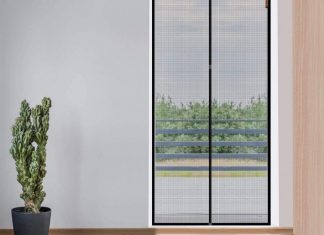No one enjoys scrubbing floors. But the longer it’s put off, the more dirt, grime, deep down stains, and gunk will accumulate making the job that much harder when you do get around to it. Despite what type of floor you have, they all come with their challenges.
The best method for tackling floor clean up is to schedule a day every week that you devote solely to a date between you and those nasty surfaces. You don’t have to treat it like a chore. Switch on the music and order some special take out before you dive in. For those who live with allergy sufferers, you’ll want to engage in some daily vacuuming at the peak of pollen season in the fall and spring.
Otherwise, the weekly maintenance should keep the surfaces in relatively good shape so the process becomes simple and fast. Once you’ve developed a routine, you’ll begin to appreciate having what is a major component of your living space looking brand new each time you enter the home, especially when guests begin to give compliments.
Steps For Cleaning Multiple Different Types of Flooring
Cleaning flooring doesn’t have to be the massive undertaking that most people create in their imagination. Often it develops into this monster of a process because it gets placed on the back burner one too many times until it becomes a challenge to bring it back to clean. But if you schedule a day each week to maintain the flooring in your home, you will develop a pattern that, over time, will become super easy and take less and less time.
** Hardwood Flooring
With hardwoods there is typically either a wax or a polyurethane finish. If you can create a smudge when rubbing your finger on the surface, you’re likely dealing with wax. Wood floors are generally sealed with a type of polyurethane coating as a protectant from water damages or staining.
On this surface, you should use a mixture of mild soap in water which you will mop on with a microfiber mop head that’s damp but not soaking for fast drying. You won’t want to wet mop any wood floors that are waxed because water will damage these. Rather they should be dust mopped with a dry head, swept, or vacuumed. Follow for guidance on cleaning hardwoods after removing old carpet.
Laminate varieties of “hardwood” should also be vacuumed or dry mopped to avoid getting water under the planks. Make sure the vacuum is set for this flooring and not for carpet to prevent damage from the beater bar. If you notice damage to the finish of any of the planks, the best fix is to replace those areas
** Carpeting
Vacuuming really fast in an effort to get it done and over actually defeats the purpose because it didn’t accomplish a thing. In order to pull up debris so the carpet doesn’t get saturated with allergens and bacteria or become ruined, you need to use slow, repetitive passes with the sweep which allows it to pull up the particles. A good rule of thumb is to set a time of approximately 20 minutes for a room size of 300 square feet. Carpeting should maybe be done two times each week instead of one.
Annually, it’s wise to enlist a professional to steam clean the carpets to extend the lifespan of the flooring. You can also rent these cleaning machines if you ever have an unexpected need.
** Cork
The porosity of the cork floor is responsible for its natural beauty, but it leaves it exceptionally susceptible to water damage. Due to its absorbability, most of these surfaces are sealed, but caution is required with frequent vacuuming to avoid scratching. Spills need to be attended to instantly, and the floors should be washed regularly – one time per week, using a mixture of vinegar, mild soap, and water.
This combination should be put in a spray bottle and sprayed onto the surface one section at a time followed by wiping with a damp microfiber head mop until the entire floor has been cleaned.
** Bamboo
These floors have a softer texture than a hardwood with a greater tendency to nick or scratch. Strand bamboo notes to be the most durable, hardest variety, but if you aren’t fortunate to have these, you should keep up with cleaning away the debris and dirt via sweeping. Again, these can be microfiber mopped with mild soap and water, damp only.
** Natural Stone
Absolutely no vinegar should touch this flooring or it will significantly damage the surface as will ammonia and bleach substances. Sealed stone flooring should be mopped with “non-chelating, pH-neutral” cleaning solution which notes to have no reaction with the minerals found in natural materials.
If the stones are not sealed, merely mop with hot water and a microfiber mop head. The stone will become penetrated by any type of chemicals. Any stubborn dirt can be lifted using a steam cleaner.
** Porcelain
On a weekly basis you will use the vinegar, mild soap, and water spray bottle solution by spritzing one section at a time and going over it with the microfiber mop that is merely damp until the whole of the floor has been completed.
Steam cleaners are ideal for cleaning tiles and grout in lifting stains and bacteria from the surfaces. This machine does all the work for you so you don’t have to put in all that extraordinary effort and time that would normally come with that job.
Final Thought
Really when you look at each of these techniques, all of which can be done on a weekly basis, except the carpeting, they’re really relatively painless. Many of them require basic mopping and a vacuum for hardwood and carpet. If that’s what it takes to make your home look fresh and like new each time you walk in, it’s probably worth a little bit of time one day out of the week. It’s better than letting it build up to the point you need backup for what you’ve created.















